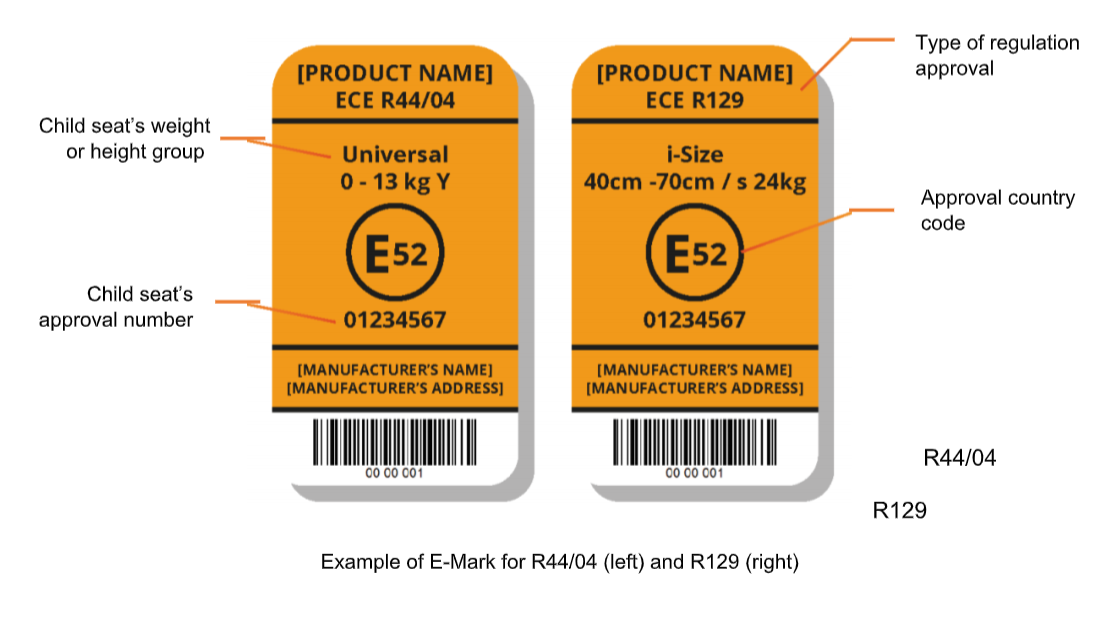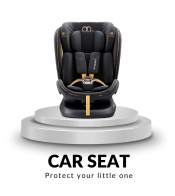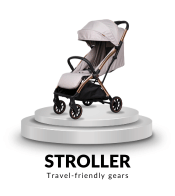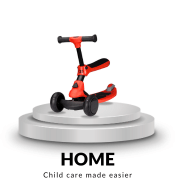Car Seat Information
What is an R129 i-Size Baby Car Seat?
In today’s fast-paced world, ensuring the safety of our precious children when travelling by car is an essential obligation. To address this pressing matter, the government has imposed the use of a new regulation: the R129 i-Size Baby Car Seat. This article goes into the complexities of this amazing newborn car seat, throwing light on its features, benefits, and the rigorous study that went into its development. By the end of this article, you’ll realise why this car seat is such an important decision for parents and carers concerned about the safety of their young passengers on the road.
Understanding the R129 Regulation
R129 is designed to develop safer measurements from the older R44/04 regulation but introduces some key changes and improvements. It aims to enhance the safety of child passengers in vehicles and make it easier for parents to choose the right car seat for their child.
The R129 (i-Size) child car seat standard is notably different from the previous R44/04 standard. For seat selection, R129 prioritises height only, allowing for more exact options. It also pushes for more rear-facing travel (for newborn to 15 months old babies), which improves crash safety. R129’s stricter side impact protection criteria provide more complete safety during lateral collisions. Furthermore, the R129 installation is simpler with the option of either ISOFIX installation or a 5-point harness seat belt, whereas R44/04 does approach with both installations.

The Difference Between R129 and R44
The previous standard R44/04 comes with weight guidelines for baby car seats that might change slightly depending on the model and manufacturer. These car seats are engineered to cater to children falling within specific weight parameters. Whereas the ECE R129 on the other hand prioritises height in centimetres over weight in kilograms.
The R44’s category baby car seat with 0+,I,II,III, forges its own route. As for the regulation car seat R129, it requires rear-facing travel until a child is at least 15 months old or up to 105 cm (approx. 4 years old) centimetres tall, but R44 regulation enables forward-facing travel as early as 9 kilograms (approx. 9 months old).
R129 also outperforms R44 in terms of extensive side impact testing and employs Q dummy crash tests with an amazing 32 sensors, as opposed to R44’s P dummy tests on rear and front impact with only 4 sensors. Notably, R129 is divided into four categories that cater to different demands and sizes of children, including seat installation and restraint methods.
How to Choose the Right R129 i-Size Car Seat
Selecting the right R129 i-Size car seat involves critical considerations. Start by factoring in your child’s to ensure an appropriate fit. Assess installation compatibility with your vehicle, as not all seats work seamlessly in every car. Budget is a key determinant, with options available at various price points.
During installation, follow manufacturer guidelines meticulously for a secure fit. Lastly, prioritise maintenance and cleaning to keep the seat in top condition. By weighing these factors and adhering to installation and upkeep tips, you’ll secure a safe and comfortable journey for your child.

Overall, our exploration underscores the paramount importance of prioritising child safety, particularly through compliance with R129 standards. These guidelines set a strong foundation for securing our young passengers on the road. To further delve into practical implementations of these standards, you can explore Koopers’ R129 SAFE Collection here.
Remember, it’s not just about compliance, it’s a pledge to safeguard our youngest travellers and create a safer future for generations to come. Your child’s safety is paramount, and it begins with adhering to these crucial standards.
FAQs
1. Is an i-Size car seat compatible with all vehicles?
Answer: i-Size car seats are designed to fit most vehicles equipped with either ISOFIX anchor points or 5-point harness seat belts. However, it’s crucial to check the compatibility list provided by the car seat manufacturer and consult your car’s manual to ensure a proper fit.
2. What is the minimum and maximum height limit for an R129 i-Size car seat?
Answer: The height limits may vary depending on the specific car seat model and manufacturer. Generally, i-Size car seats accommodate children from 40cm to approximately 150cm. Check the manufacturer’s guidelines for your specific car seat.
3. How should I install an R129 i-Size car seat correctly?
Answer: Proper installation is crucial for safety. Follow the manufacturer’s instructions carefully and always use the ISOFIX system if required. Additionally, consult your car’s manual for guidance on securing the car seat properly.
4. Can I use an i-Size car seat on an airplane?
Answer: Some i-Size car seats are certified for use on airplanes, but not all of them. Check the manufacturer’s guidelines and labels on the car seat to confirm its FAA compatibility. Always inform the airline in advance and follow their specific rules regarding child car seats.
Reference:
- https://www.which.co.uk/reviews/child-car-seats/article/i-size-child-car-seats-explained-aTtO35C7FGbr
- https://www.halfords.com/vrn-uk/baby-and-child/advice/what-is-the-R129-child-car-seat-safety-standard.html
- https://www.motherandbaby.com/reviews/travel-products/how-to-pick-the-right-car-seat/
- https://kiddy123.com/article/buckle-up-malaysians-its-click-it-or-ticket-in-2020.html
- https://avionaut.com/knowledge-base/articles/r129-03-standard-the-latest-safety-standard-for-car-seats/
 .
. .
. .
.